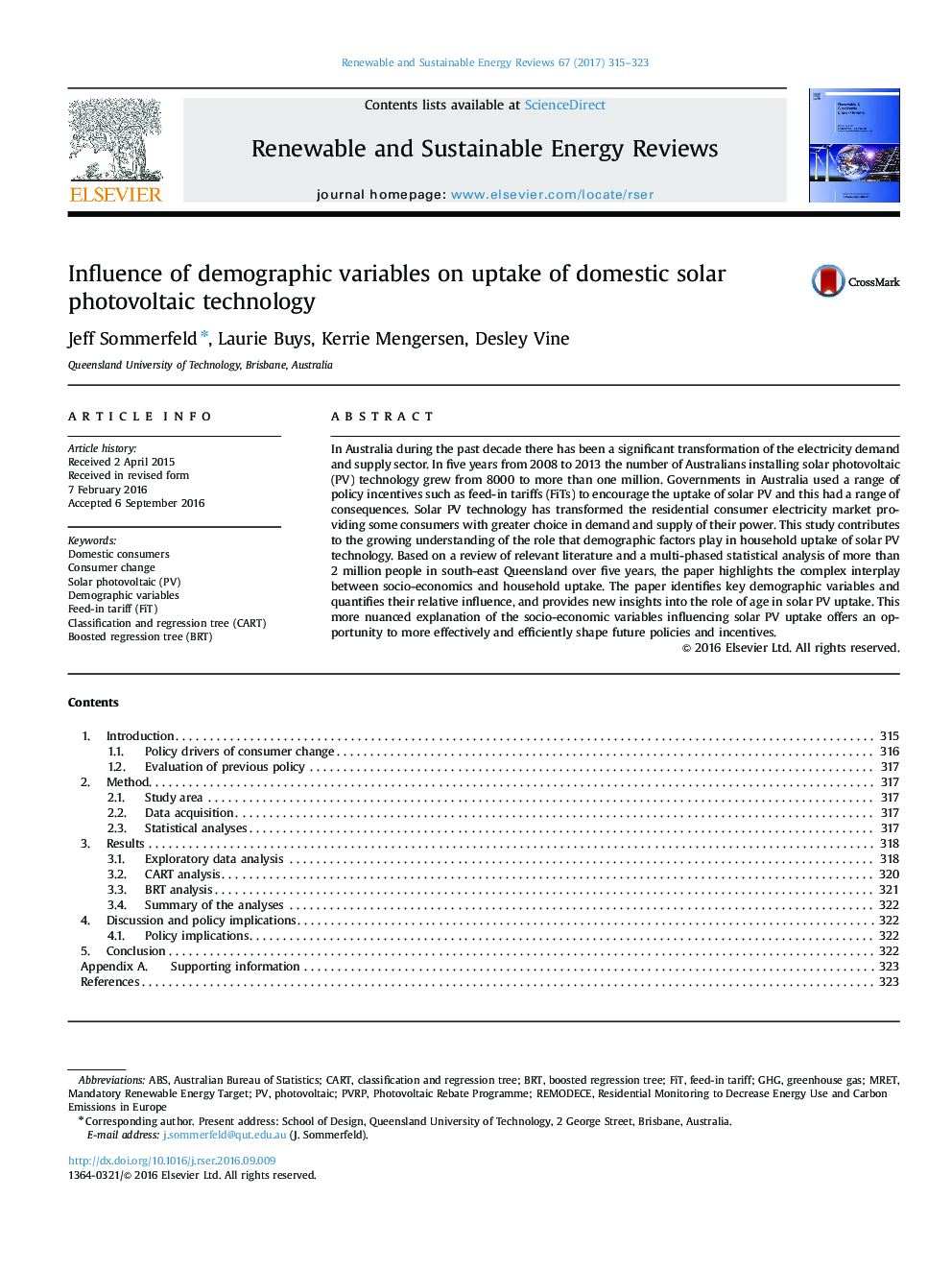| Article ID | Journal | Published Year | Pages | File Type |
|---|---|---|---|---|
| 5482737 | Renewable and Sustainable Energy Reviews | 2017 | 9 Pages |
Abstract
In Australia during the past decade there has been a significant transformation of the electricity demand and supply sector. In five years from 2008 to 2013 the number of Australians installing solar photovoltaic (PV) technology grew from 8000 to more than one million. Governments in Australia used a range of policy incentives such as feed-in tariffs (FiTs) to encourage the uptake of solar PV and this had a range of consequences. Solar PV technology has transformed the residential consumer electricity market providing some consumers with greater choice in demand and supply of their power. This study contributes to the growing understanding of the role that demographic factors play in household uptake of solar PV technology. Based on a review of relevant literature and a multi-phased statistical analysis of more than 2 million people in south-east Queensland over five years, the paper highlights the complex interplay between socio-economics and household uptake. The paper identifies key demographic variables and quantifies their relative influence, and provides new insights into the role of age in solar PV uptake. This more nuanced explanation of the socio-economic variables influencing solar PV uptake offers an opportunity to more effectively and efficiently shape future policies and incentives.
Keywords
Related Topics
Physical Sciences and Engineering
Energy
Renewable Energy, Sustainability and the Environment
Authors
Jeff Sommerfeld, Laurie Buys, Kerrie Mengersen, Desley Vine,
